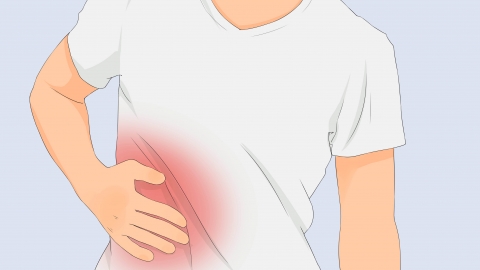胆结石两公分怎么处理
In general, the management of a 2 cm gallstone depends on whether it is asymptomatic or associated with mild discomfort, chronic cholecystitis, biliary colic, or bile duct obstruction. It is recommended to seek timely medical evaluation to determine the underlying cause, followed by appropriate interventions—such as lifestyle modifications, medication, or surgery—under a doctor's guidance. The specific analysis is as follows:

1. Asymptomatic stones: When the stone does not irritate the gallbladder or bile ducts and causes no pain, bloating, or other discomfort, and gallbladder function remains normal. Regular monitoring via abdominal ultrasound is advised every 6–12 months to track stone size and gallbladder condition. Maintain a low-fat diet, avoid overeating, and reduce the risk of stone movement.
2. Mild discomfort caused by stones: Occasional irritation of the gallbladder wall by the stone may lead to mild bloating or dull pain in the upper right abdomen, without severe colic. Symptoms can be relieved through dietary adjustments—avoid fatty meats and fried foods. If discomfort occurs frequently, follow medical advice to take medications such as ursodeoxycholic acid capsules, anti-inflammatory and cholagogue tablets, or Danning tablets to improve gallbladder function and reduce irritation.
3. Stones complicated with chronic cholecystitis: Long-term friction from the stone causes chronic inflammation of the gallbladder, leading to recurrent upper right abdominal discomfort that worsens after meals. Patients should take prescribed medications such as cefuroxime axetil tablets, metronidazole tablets, or compound DanTong capsules to control inflammation. Strict dietary control is also essential to prevent recurrent flare-ups.
4. Stones complicated with biliary colic: When the stone blocks the cystic duct, sudden, severe pain occurs in the upper right abdomen, often accompanied by nausea and vomiting. Immediate fasting and fluid restriction are required. Follow medical instructions to use antispasmodic and analgesic medications such as racemic hyoscine butylbromide tablets, ibuprofen sustained-release capsules, or diclofenac sodium enteric-coated tablets to relieve spasms and pain. After pain subsides, further treatment options should be evaluated.
5. Stones complicated with bile duct obstruction: If a stone dislodges into the bile duct and causes obstruction, symptoms such as jaundice, abdominal pain, and fever may occur. Under medical guidance, laparoscopic cholecystectomy should be performed to remove the diseased gallbladder and stones, thereby relieving the obstruction. If residual stones remain in the bile duct, endoscopic retrograde cholangiopancreatography (ERCP) with stone extraction may be combined to clear the bile duct stones.
Routine daily habits include maintaining regular meal times—especially eating breakfast—to promote regular bile excretion. Engage in moderate physical activity such as walking or jogging, maintain a healthy weight, reduce gallbladder strain, and help prevent complications related to gallstones.




